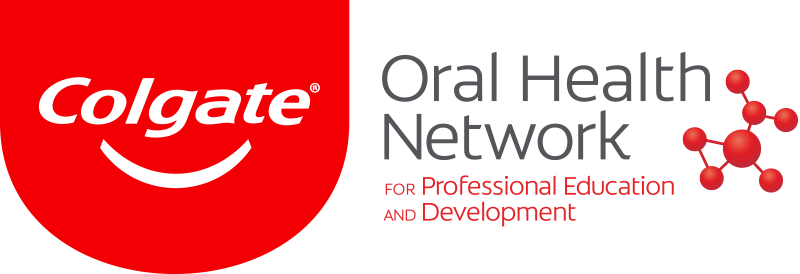OSLO, Norway: The widespread availability of vaccines in developed nations has significantly changed the risk of dentists contracting SARS-CoV-2 in a workplace setting. Prior to this, however, dentists and other workers in other occupations that typically involve close contact were widely believed to be at a relatively high risk of developing COVID-19. A new study out of Norway has sought to examine this idea further by comparing how this risk differed across occupations between the country’s two COVID-19 waves in 2020.
The study was conducted by researchers from the Norwegian Institute of Public Health, who used data from an emergency preparedness register for COVID-19 to form an observational study covering the entire Norwegian population between 26 February and 18 December 2020. The occupational groups chosen—health (including dentists), teaching, retail, tourism and travel, catering, and recreation and beauty—were selected based on their high likelihood of direct, close contact with other people.
The researchers estimated and then compared the total number of confirmed COVID-19 cases per 1,000 employed individuals for each of the country’s two COVID-19 waves—the first spanning from 26 February to 17 July and the second from 18 July to 18 December. In total, just over 3.5 million Norwegian residents of working age were studied. By 18 December, 30,003 (0.8%) had developed COVID-19 and 1,550 of these patients (5.2%) required hospitalisation.
“For any comparison of our findings to those in other countries, it should be noted that transmission of COVID-19 has been relatively low in Norway when compared with other countries,” the authors wrote.
According to the study’s findings, during the first wave, dentists, doctors, nurses and other healthcare professionals were approximately two to 3.5 times more likely to develop COVID-19 than were all other Norwegians of working age. During the second wave, however, whereas doctors were moderately more likely to test positive for SARS-CoV-2, dentists were found to be no more likely to contract the virus than the average employed individual.
The authors noted multiple potential explanations for this reduction in risk for healthcare professionals in the second COVID-19 wave. One such explanation was that differences in test criteria in Norway resulted in the inclusion of milder confirmed COVID-19 cases during the second wave instead of only those with a severe form of the disease.
“However, it is also possible that health personnel have implemented better infection control measures, resulting in fewer healthcare workers (e.g. nurses, dentists, and others) being infected as the pandemic progressed,” the authors noted.
Dentists possibly at a higher risk
In a similar study that focused on dental professionals in the UK, researchers from the University of Birmingham found that close contact with patients put dental professionals at a higher risk of developing COVID-19 during the first wave of the pandemic. In addition, they discovered that a large number of dental professionals had SARS-CoV-2 antibodies in their blood.
The findings of the Norwegian study suggested that dentists could be more likely than other workers to develop acute COVID-19. In their discussion, the authors wrote that, though there were “few cases and considerable uncertainty in our analyses of COVID-19-related hospitalisation, our results may indicate that dentists are at increased risk of severe COVID-19, raising important new hypotheses regarding the relevance of viral load or infectious doses in causing severe disease”.
The study, titled “Occupational risk of COVID-19 in the first versus second epidemic wave in Norway, 2020”, was published online on 7 October 2021 in the Eurosurveillance journal.
Tags:
BIRMINGHAM, UK: To fill a research gap, researchers have recently examined whether dental professionals are, in fact, at an increased risk of becoming ...
COPENHAGEN, Denmark: Dental clinics in Denmark were permitted to reopen on 20 April, and Norwegian dentists have started to provide non-emergency treatment ...
BOSTON, US: During the pandemic, the majority of dental professionals had to cease their dental activities in order to slow down the spread of COVID-19. The...
CHICAGO, U.S.: Since SARS-CoV-2 is an airborne virus and very easily spreads through aerosols, dentists were believed to be at a high infection risk at the ...
BRNO, Czech Republic: A recent study carried out by scientists from Masaryk University in Brno has suggested that there may be a link between new‐onset ...
CHICAGO, U.S.: New research from the American Dental Association (ADA) Health Policy Institute (HPI) shows that the average net earnings of general ...
BRUSSELS, Belgium: Dentists all over Europe are doing their part to limit the spread of COVID-19 while staying up to date with national and local ...
CHICAGO, US: Similarly to other dental professionals, dental hygienists have been put in the spotlight during the COVID-19 pandemic owing to the belief that...
LEIPZIG, Germany: Not all of the effects of the SARS-CoV-2 pandemic have been negative. Social distancing measures and travel restrictions effectively ...
LONDON, UK: A new report commissioned by the General Dental Council (GDC) has found that UK dental professionals are pessimistic about being able to meet ...
Live webinar
Tue. 6 August 2024
6:00 pm EST (New York)
Live webinar
Tue. 6 August 2024
8:00 pm EST (New York)
Dr. Cameron Shahbazian DMD MBA
Live webinar
Tue. 13 August 2024
7:00 pm EST (New York)
Live webinar
Wed. 14 August 2024
12:30 pm EST (New York)
Live webinar
Wed. 21 August 2024
9:00 am EST (New York)
Dr. Jim Lai DMD, MSc(Perio), EdD, FRCD(C)
Live webinar
Thu. 22 August 2024
4:00 pm EST (New York)
Live webinar
Wed. 28 August 2024
8:00 pm EST (New York)



 Austria / Österreich
Austria / Österreich
 Bosnia and Herzegovina / Босна и Херцеговина
Bosnia and Herzegovina / Босна и Херцеговина
 Bulgaria / България
Bulgaria / България
 Croatia / Hrvatska
Croatia / Hrvatska
 Czech Republic & Slovakia / Česká republika & Slovensko
Czech Republic & Slovakia / Česká republika & Slovensko
 France / France
France / France
 Germany / Deutschland
Germany / Deutschland
 Greece / ΕΛΛΑΔΑ
Greece / ΕΛΛΑΔΑ
 Italy / Italia
Italy / Italia
 Netherlands / Nederland
Netherlands / Nederland
 Nordic / Nordic
Nordic / Nordic
 Poland / Polska
Poland / Polska
 Portugal / Portugal
Portugal / Portugal
 Romania & Moldova / România & Moldova
Romania & Moldova / România & Moldova
 Slovenia / Slovenija
Slovenia / Slovenija
 Serbia & Montenegro / Србија и Црна Гора
Serbia & Montenegro / Србија и Црна Гора
 Spain / España
Spain / España
 Switzerland / Schweiz
Switzerland / Schweiz
 Turkey / Türkiye
Turkey / Türkiye
 UK & Ireland / UK & Ireland
UK & Ireland / UK & Ireland
 International / International
International / International
 Brazil / Brasil
Brazil / Brasil
 Canada / Canada
Canada / Canada
 Latin America / Latinoamérica
Latin America / Latinoamérica
 USA / USA
USA / USA
 China / 中国
China / 中国
 India / भारत गणराज्य
India / भारत गणराज्य
 Japan / 日本
Japan / 日本
 Pakistan / Pākistān
Pakistan / Pākistān
 Vietnam / Việt Nam
Vietnam / Việt Nam
 ASEAN / ASEAN
ASEAN / ASEAN
 Israel / מְדִינַת יִשְׂרָאֵל
Israel / מְדִינַת יִשְׂרָאֵל
 Algeria, Morocco & Tunisia / الجزائر والمغرب وتونس
Algeria, Morocco & Tunisia / الجزائر والمغرب وتونس
 Middle East / Middle East
Middle East / Middle East
:sharpen(level=0):output(format=jpeg)/up/dt/2023/11/COVID-19-softened-decline-in-US-dental-opioid-prescriptions.jpg)
:sharpen(level=0):output(format=jpeg)/up/dt/2023/10/Research-examines-burn-out-during-COVID-19-offers-strategies-for-resilience.jpg)
:sharpen(level=0):output(format=jpeg)/up/dt/2023/08/COVID-19-pandemic-had-both-positive-and-negative-consequences-for-orthodontists.jpg)
:sharpen(level=0):output(format=jpeg)/up/dt/2023/04/New-report-by-WHO-reveals-impact-of-COVID-19-on-healthcare-professionals.jpg)
:sharpen(level=0):output(format=jpeg)/up/dt/2023/01/Dental-practitioners-did-not-face-increased-risk-of-COVID-19-during-clinical-activities-study-says.jpg)
:sharpen(level=0):output(format=jpeg)/up/dt/2021/10/shutterstock_1821130349.jpg)

:sharpen(level=0):output(format=jpeg)/up/dt/2023/11/COVID-19-softened-decline-in-US-dental-opioid-prescriptions.jpg)
:sharpen(level=0):output(format=gif)/wp-content/themes/dt/images/no-user.gif)
:sharpen(level=0):output(format=jpeg)/up/dt/2021/06/New-study-examines-extent-of-occupational-risk-of-COVID-19-in-UK.jpg)
:sharpen(level=0):output(format=jpeg)/up/dt/2020/04/Dentists-in-Denmark-and-Norway-go-back-to-work.jpg)
:sharpen(level=0):output(format=jpeg)/up/dt/2023/01/Dental-practitioners-did-not-face-increased-risk-of-COVID-19-during-clinical-activities-study-says.jpg)
:sharpen(level=0):output(format=jpeg)/up/dt/2020/10/Less-than-1-percent-of-dentists-in-the-U.S.-affected-by-COVID-19_780-x-439.jpg)
:sharpen(level=0):output(format=jpeg)/up/dt/2020/12/Scientists-examine-halitosis-in-COVID%E2%80%9019-patients_780-x-439.jpg)
:sharpen(level=0):output(format=jpeg)/up/dt/2021/10/Dentists%E2%80%99-earnings-slumped-in-2020.jpg)
:sharpen(level=0):output(format=jpeg)/up/dt/2020/04/Dentists-across-Europe-face-business-challenges-in-times-of-COVID-19-.jpg)
:sharpen(level=0):output(format=jpeg)/up/dt/2022/03/Study-sheds-light-on-impact-of-COVID-19-pandemic-on-dental-hygienists.jpg)
:sharpen(level=0):output(format=jpeg)/up/dt/2020/12/Dentists-embraced-online-education-in-2020.jpg)
:sharpen(level=0):output(format=jpeg)/up/dt/2021/01/UK-dentists-expect-drop-in-earnings-patient-numbers-in-2021.jpg)














:sharpen(level=0):output(format=jpeg)/up/dt/2023/11/COVID-19-softened-decline-in-US-dental-opioid-prescriptions.jpg)
:sharpen(level=0):output(format=jpeg)/up/dt/2023/10/Research-examines-burn-out-during-COVID-19-offers-strategies-for-resilience.jpg)
:sharpen(level=0):output(format=jpeg)/up/dt/2023/08/COVID-19-pandemic-had-both-positive-and-negative-consequences-for-orthodontists.jpg)
To post a reply please login or register